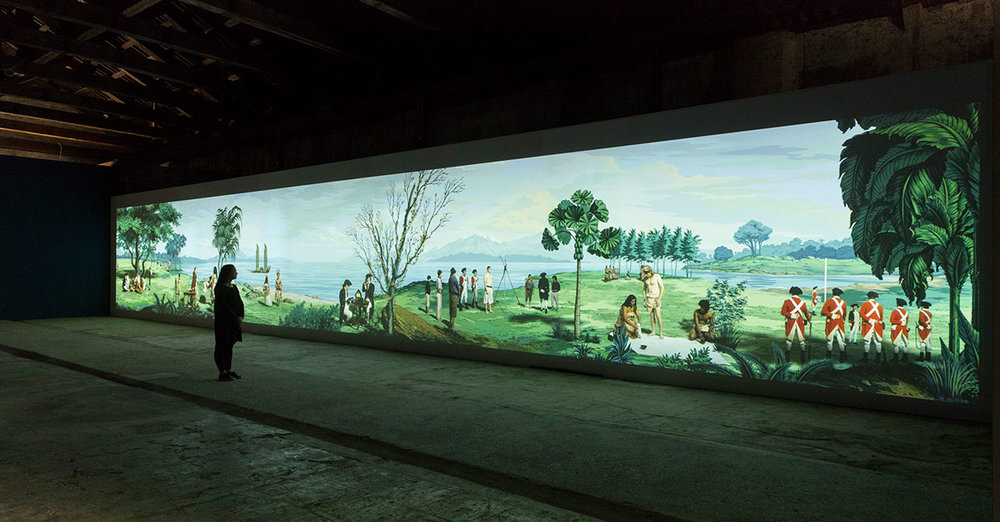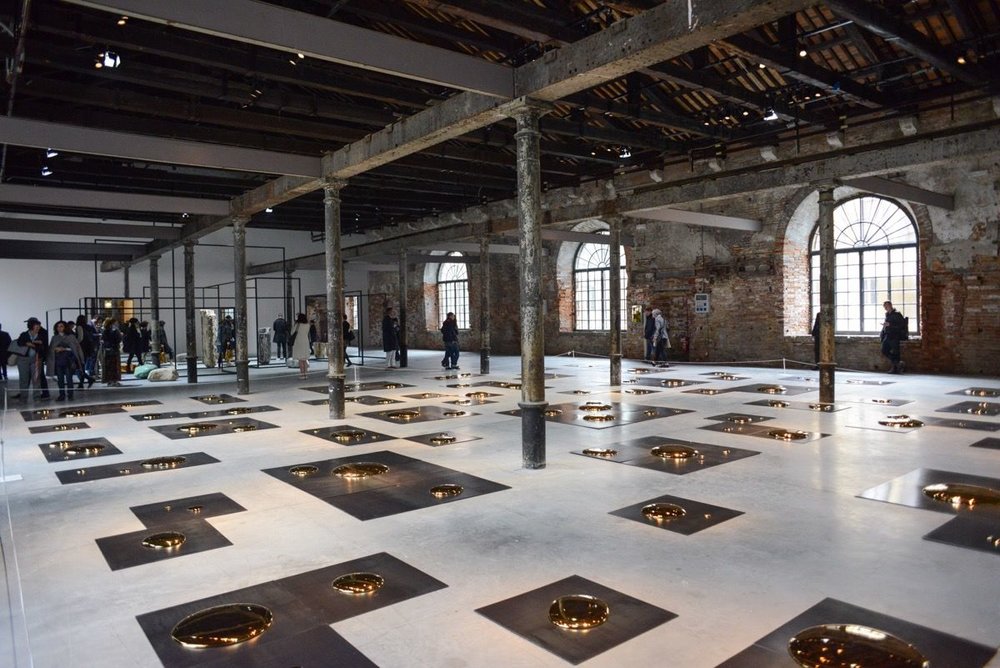Prismatic Perspectives: A Biennale in Three Parts
November 22, 2017
by Waseem Rahman
Art exhibitions provide a platform through which various artists can showcase their artistic creations. Art exhibitions are a culmination of converged efforts from different players in the industry. The Venice Biennale plays a lead role in the convergence of artistic effort. It inspires and systematizes several exhibitions which capture the intricacies of contemporary art. Viva Arte Viva, the theme of the 2017 Venice Biennale, reflects the responsibilities and identities of individual artists in the determination of solution to some of the contemporary challenges that beleaguer human existence. The exhibition sought to examine the artistes’ different points of views and the foundational principles that inspire their inclinations. Some of the notable artists who participated in the exhibition included Mark Bradford from the US, Lisa Reihana from New Zealand, and Liu Jianhua from Shanghai. Each of them exhibited an art that was intended to communicate their interpretations of the elements in their environment.
%252C%252BLeucosia%252B(right)%252C%252Band%252BMedusa%252B(center)%252Bby%252BMark%252BBradford%252C%252B2016.jpeg)
Mark Bradford’s exhibition at the Venice Biennale included his work titled Thelxiepeia. As an artist, his thematic concerns revolve around the understanding of a government that he no longer feels aligned to. Bradford questions his allegiance to a government that no longer represents him as an individual and a citizen. Thelxiepeia is a representation of the lack of clarity that beleaguers the artist with regards to his government. The rough texture employed by the artist is a reinforcement of the duty of artists to redefine their surroundings. The art is an extension of Ad Reinhardt’s reinforcement of the freedom of the artist to develop art without fearing the implications that will result from interpretation. Reinhardt determined that “The one object of fifty years of abstract art is to present art-as-art and as nothing else, to make it into the one thing it is only, separating and defining it more and more, making it purer and emptier, more absolute and more exclusive - non-objective, non-representational, non-figurative, non-imagist, non-expressionist, non-subjective” (806).

Alternatively, Lisa Reihana’s exhibition, Emissaries, is a reconstruction of history, imperialism, and myth. The panoramic video features several sculptural and photo-inclined elements. It is a recollection and reconstruction of history based on contemporary parameters. Reihana’s exploration is an extension of the Baroque style which prevailed in the 15th century Venice. Principally, the style reinforced motion and clarity in the development of artistic work. It further emphasized the eased interpretative process in the creation of art. By engaging several artistic elements in her panoramic video, Reihana hoped to capture the culture and grandeur of the past societies. The use of vivid color further inspires a sense of adventure which bespeaks the essence of the Baroque style.

Lastly, Liu Jianhua’s Square is a reflection of the artist’s commitment to form and beauty. It is a summary of the elements of life. The black squares etched in the white tiles represents the simplicity of life. Jianhua aimed to capture the briefness of elements that are sometimes assumed to be complicated and numerous in human life. The squares are made up of gold droplets which symbolize the essentiality of the minute within a multitude. The droplets within the squares further symbolize the possibility of the existence of different elements in the society. Square is a reflection of artistic expertise since it incorporates elements that are divergent and further spans an entire room.
